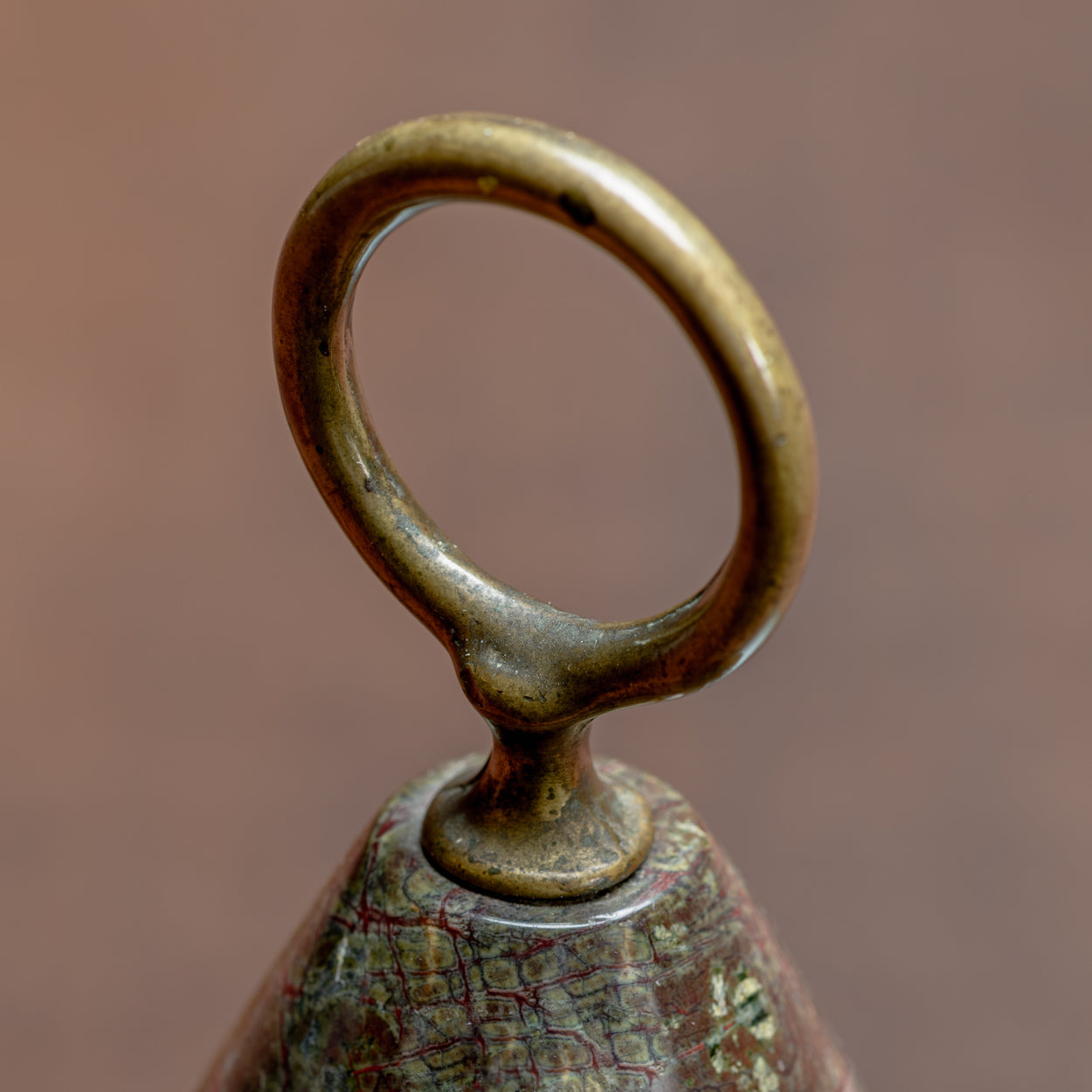
Philips 14 Inch Globe
- Regular price
- £4,200.00
- Sale price
- £4,200.00
- Regular price
-
- Unit price
- /per
Adding product to your basket
A substantial 14 inch gesso terrestrial globe by Philips of London on brass inclined plain mount attached to original turned wooden based upright with axes secured at the top by a brass finial. Has Air Ministry stamp on the underside of the base. Circa 1940.
The globe is printed in several colours and comprises of twelve coated lithographic paper gores with polar calottes over a fourteen inch gesso covered sphere. The age of the globe has been determined by the named areas displayed and the political borders shown.
It shows all the continents and countries as they were at the time it was printed and also indicates all the principal shipping routes with distances in nautical miles and the principal railways. A cartouche is present that includes the title, maker's address, the scale (1:36,000000) and the colouring scheme used for the globe.
Dimensions: 35.5 cm/14 inches (Globe diameter) x 52 cm/20½ inches (Max. height on stand).
George Philip, (1800–1882) was a cartographer and map publisher. He founded George Philip & Sons in 1834 in Liverpool initially as a bookseller and stationer, but rapidly expanding to become a publisher of primarily maps, atlases and educational works. He had one son, also George (1823–1902), who was admitted to the business in 1848.
George senior was born in Huntly, Aberdeenshire and by 1819 he had become assistant to the Liverpool bookseller, William Grapel before going on to start his own business. He used cartographers (such as John Bartholomew the elder, August Petermann, and William Hughes) to produce maps on copper plates. Philip then had these printed and hand-coloured by his women tinters. The business expanded rapidly and by the time he produced his county maps of 1862 he was using machine coloured maps produced on power-driven lithographic presses.
Philips' production of globes in the 19th century was mainly limited to associations with other British globe makers, including Smith & Sons, London, but in 1902 Philip ventured into the production of globes as a manufacturer, facilitated by the firm's establishment of the London Geographical Institute, a large factory for map, atlas, and globe production. Globes from this era are generally constructed by forming a sphere made either of card or fibreboard covered by gesso (plaster) to ensure smoothness.
The sphere was then overlaid with a map printed on long, thin elliptical strips of paper (known as gores) that narrow to a point at the North and South Poles.
Over the years, Philip acquired the production lines of other British globe makers including Malby, Betts, Smith and Johnston. The firm also supplied atlases and textbooks overseas starting with an atlas for Australian schools in 1865 and for New Zealand in 1869. The demand from board schools, established after 1870, enabled further expansion in the market for globes, atlases and wall maps.
DELIVERY
For online purchases exceeding £100 we currently offer free worldwide shipping.
RETURNS
We offer a 14 day to return policy.
If you wish to return or exchange an item please contact our London store at +44 (0)20 7584 7770 or by e-mail at shop@bentleyslondon.com
All returns should be sent back to us unused, in the original packaging provided with any tags still attached.
For full details of delivery and returns click here
You may also like
-
Large Serpentine Doorstop
![]()
 Large Serpentine Doorstop19TH_CENTURYbrassFurniturelatest_arrivalsStone
Large Serpentine Doorstop19TH_CENTURYbrassFurniturelatest_arrivalsStone- Regular price
- £950.00
- Sale price
- £950.00
- Regular price
-
- Unit price
- /per
Sale Sold -
Very Large Crocodile Skin Cigar Case
![]()
 Very Large Crocodile Skin Cigar Case20TH_CENTURYcigars_and_smokingCROCODILElatest_arrivalsmonogrammonogram-A.B.monogram-AB
Very Large Crocodile Skin Cigar Case20TH_CENTURYcigars_and_smokingCROCODILElatest_arrivalsmonogrammonogram-A.B.monogram-AB- Regular price
- £3,200.00
- Sale price
- £3,200.00
- Regular price
-
- Unit price
- /per
Sale Sold -
Propeller Clock
![]()
 Propeller Clock20TH_CENTURYbrassClocksmotoring_flying_and_sailingWOOD
Propeller Clock20TH_CENTURYbrassClocksmotoring_flying_and_sailingWOOD- Regular price
- £6,800.00
- Sale price
- £6,800.00
- Regular price
-
- Unit price
- /per
Sale Sold -
Silver Plated Ice Cube Bucket
![]()
 Silver Plated Ice Cube Bucket20TH_CENTURYAntiquebarwarelatest_arrivalsSILVER
Silver Plated Ice Cube Bucket20TH_CENTURYAntiquebarwarelatest_arrivalsSILVER- Regular price
- £1,200.00
- Sale price
- £1,200.00
- Regular price
-
- Unit price
- /per
Sale Sold -
Dunhill Aquarium Lighter
![]()
 Dunhill Aquarium Lighter20TH_CENTURYcigars_and_smokingDunhilllatest_arrivals
Dunhill Aquarium Lighter20TH_CENTURYcigars_and_smokingDunhilllatest_arrivals- Regular price
- £7,500.00
- Sale price
- £7,500.00
- Regular price
-
- Unit price
- /per
Sale Sold






















